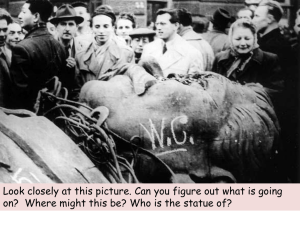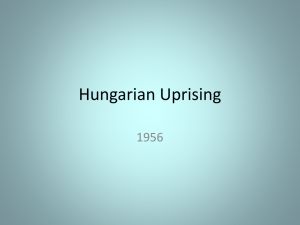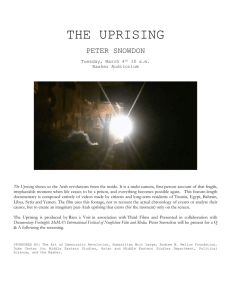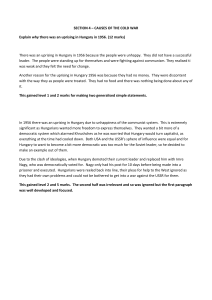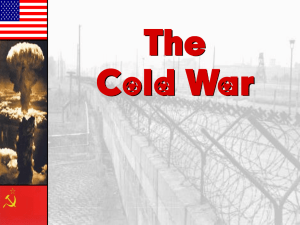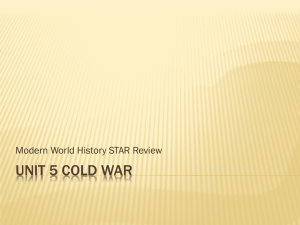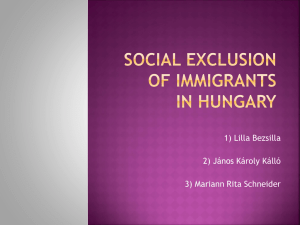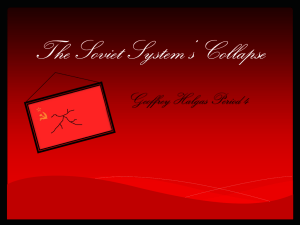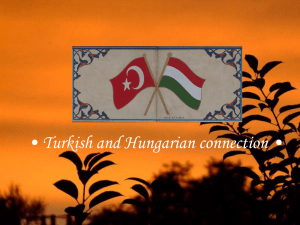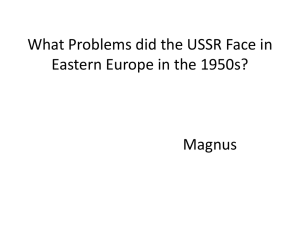What were the causes, events and results of the Hungarian Uprising?
advertisement
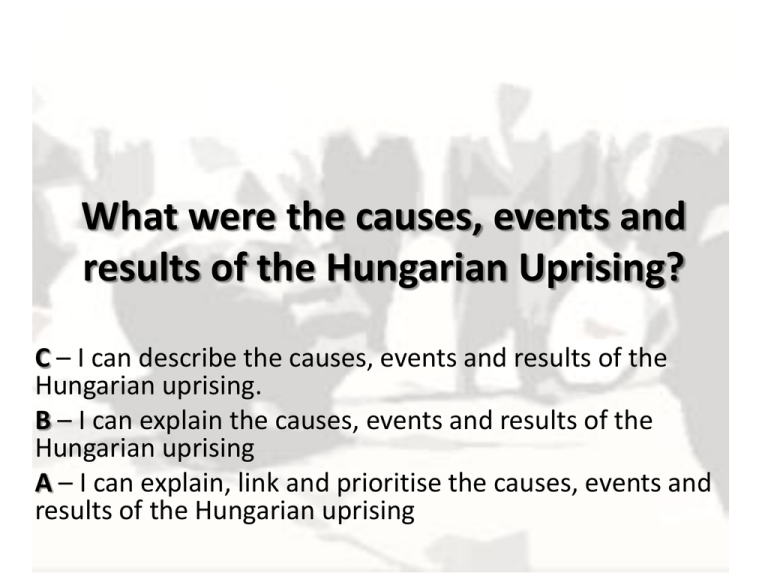
What were the causes, events and results of the Hungarian Uprising? C – I can describe the causes, events and results of the Hungarian uprising. B – I can explain the causes, events and results of the Hungarian uprising A – I can explain, link and prioritise the causes, events and results of the Hungarian uprising What were the reasons for the Hungarian uprising? • Hungary had been occupied by the Soviet Union as they drove back Nazi forces in 1944. • The Soviet Union took control of Hungary by ignoring the result of democratic elections. • Communists ran the Hungarian security police and arrested members of the popular Smallholders’ Party and National Peasant Party. • The Communists seized control of Hungary under the leadership of Matyas Rakosi. • Rakosi was dictator and Hungary joined the Cominform. What were the reasons for the Hungarian uprising? • Rakosi’s rule was brutal – he is estimated to have killed 2000 opponents and imprisoning 200,000, using the AVH – his secret police. • Religious teaching in school was stopped and the Catholic bishop jailed for life. • Hungary’s economy was controlled by the Comecon and had to trade on uneven terms – often not receiving a fair price for its exports. • Living standards of Hungarian people got worse, and agricultural output fell. • People were Hungary and angry with Rakosi and the Communist government. What were the reasons for the Hungarian uprising? • After Stalin’s death in 1953 Rakosi was replaced with Nagy. However, Rakosi returned to power in 1955. • Rakosi was forced out of power in 1956 and replaced by Gero. Some of Rakosi’s victims were re-buried. • Students demonstrated in Budapest for free elections, free press and the withdrawal of Soviet troops. A statue of Stalin was toppled and dragged through the streets. What were the events of the uprising? • The Soviet Leader, Khrushchev, sent Soviet troops to Budapest to deal with the protestors. Tanks killed 12 and wounded more than 100. • Gero was forced to resign and Nagy returned as Prime Minister. • Nagy negotiated the withdrawal of Soviet troops. What were the events of the uprising? • Comments by US Secretary of State John Dulles gave the Hungarians hope of support ‘you can count on us’. However, President Eisenhower did not want to commit. • Nagy issued a list of reforms, released political prisoners including the Catholic Bishop, and announced Hungary would leave the Warsaw Pact. • Nagy asked the UN for support. What were the events of the uprising? • Krushchev decided enough was enough. Under pressure from Chairman Mao in China, Krushchev sent 200,000 Soviet troops back into Hungary in November 1956. • The Hungarians fought a ‘rebel’, guerrilla war against the Soviets until the middle of 1957, but were no real match for the Soviets. • The World’s attention was on the Suez crisis and the Soviet Union were allowed to crush the uprising. • Hungary’s new leader promised Nagy safe passage out the country, but this was a lie and Nagy was captured and murdered. What were the results of the uprising? • Thousands died on both sides, mainly Hungarians. • Khrushchev kept control of Hungary. • Thousands fled Hungary as refugees – many to Britain. • A message was sent to other Soviet ‘satellite states’ – don’t even think of breaking away! • Khrushchev’s messages of peace to the West came to be seen as a sham. Exam Questions • Describe one decision taken by Imre Nagy when he was prime minister of Hungary. (2 marks, 2 minutes, POINT, EXPLANATION) • Briefly explain the key features of the Hungarian Uprising of 1956. (6 marks, 8 minutes, POINT, EXPLANATION X3) • Explain why relations between the USA and the Soviet Union worsened in the years 1948 – 56. (12 marks, 15 minutes, POINT, EXPLANATION, LINK X3, CONCLUSION)
